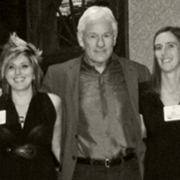Eagle Rock School: A Critical Look in the Rear View Mirror
It’s a rare of opportunity for an architect to be invited back to review a completed project 28 years after it was conceived and built. In this case we are talking about the Eagle Rock School and Professional Development Center in Estes Park, Colorado. This residential high school for at-risk students continues to be one of the most significant design assignments that Barrett Studio has been involved with over our 40 years of practice.
Eagle Rock School was funded by American Honda Motor Company. An example of admirable corporate philanthropy, the school continues to make a dramatic difference in young people’s lives. It pulls high school age kids from all over the United States from diverse backgrounds and cultures, and transforms their lives by promoting community, integrity and citizenship.
A walk on campus immediately conveys a sense that the young men and women are not “falling through the cracks,” as they may once have been described, but rather are engaged in life, their education, and their futures. So the good news is, the dedicated educators at Eagle Rock School, and the campus architecture that is home to this life changing pedagogy, is working!
We jumped at the opportunity to return to Eagle Rock School for a critical review, to ultimately establish an updated vision and master plan that will take this nascent learning community into its next chapter of changing lives. We joined with our original co-creator, Planner and Landscape Architect Jeff Winston, to tour the campus and interview the staff and students.
“Post Occupancy Evaluation” is a way of learning about the impact of the myriad of ideas and designs that went into a project. After years of use it can be viewed from the rear view mirror – what worked and what didn’t.
What the rear view mirror showed us.
At the beginning of the design process, we spent a lot of time really digging deep into the values, intents and underlying patterns. This effort guided us to good, timeless design decisions.
The big ideas and relationships have stood the test of time and provided qualitative paybacks in the ongoing life of the students and staff. The campus is loved as a home embedded in the magnificent mountain environment. The simple high country design of the buildings works at this challenging altitude.
Having the resources to maintain the buildings, something dollar-strapped school districts often lack, is also visible throughout. The students have made their own contributions, in the form of art projects (for example, the image below), and ongoing furniture reconfigurations.
The things that “just plain work” are the simple things that are often lacking in public education: quality natural daylight, operable windows, warm floors, inspiring views, good acoustics (in many cases), and well-designed rooms and furniture that encourage interaction and communication.
Some of the less successful things quickly became obvious.
Faculty, who are experiential in their educational predispositions and have active lifestyles, are sorely lacking storage in the housing. The sides of buildings that have the protection of large overhangs are “decorated” with bikes, sleds and various outdoor gear in a creative response to the shortage of storage.
Another big learning point was that we underestimated the impact of the emotional struggles that these students in particular have but also is somewhat the nature of the teen years. The school really needs to build more staff housing on campus so they can provide 24/7 support for the students. The faculty kitchens and living spaces are seen as undersized because of the unanticipated nightly presence of students in search of “home.” Student housing, on the other hand, had a well functioning common space, but their shared bunk rooms felt tight and lacked personal space.
We found the educational spaces to be successful, but there is need for expansion to comfortably serve larger groups. The library, like all libraries, is going through a transition from primarily print, to primarily digital.
Design matters.
It is clear that exceptional, committed teachers are the most important feature in helping young people turn their lives around. But design does matter. Does the architecture serve the learning process, or get in the way? Does it connect with place and the living systems, or distance one from this grounding relationship? Do materials and furnishings fail under the normal exuberance of youthful energy, or do they age gracefully?
In any case, you can’t help but walk away from Eagle Rock School with a sense of appreciation for the opportunity to engage in such important work. Young lives matter!




















